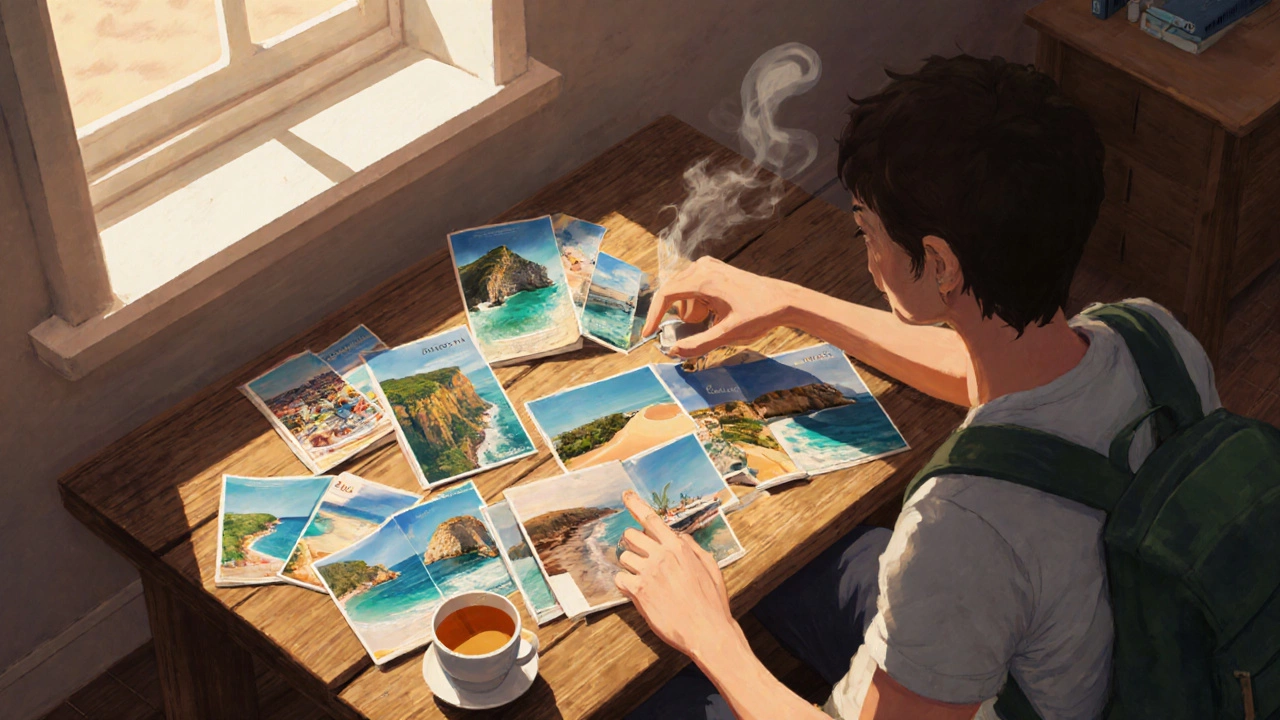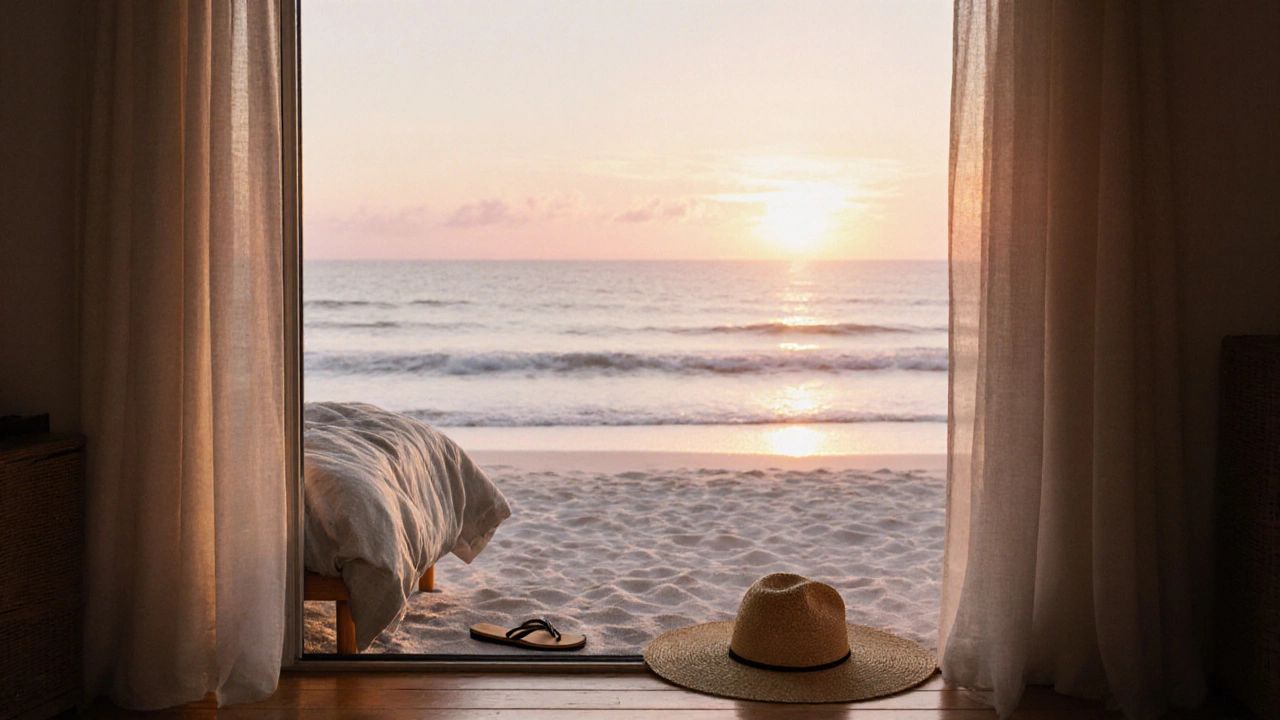Beach Trip Planner
Your Beach Trip Itinerary
Selected Destination
Travel Dates
Accommodation
Activities
Recommended Packing
Imagine waking up to the sound of waves, sunlight glinting on the sand, and a day that feels tailor‑made for you. That’s the promise of a well‑planned beach trip, but getting there requires more than just buying a plane ticket. Below is a step‑by‑step guide that turns a vague idea of "going to the beach" into a smooth, unforgettable vacation.
Quick Summary
- Set clear dates and pick a destination that matches your vibe.
- Choose accommodation based on budget, privacy, and amenities.
- Map out transportation options early to avoid last‑minute price spikes.
- Draft a packing list that covers sun, water, and unexpected weather.
- Plan activities, safety measures, and a flexible itinerary.
- beach trip planning is easier when you break it into these bite‑size tasks.
1. Pick the Right Destination and Dates
First, decide where you want to splash. Destination is the specific location you’ll travel to, such as a coastal city, island, or secluded cove shapes everything else - from the kind of lodging you’ll need to the activities on offer. Ask yourself:
- Do I want bustling boardwalks or quiet dunes?
- Is the beach known for surfing, snorkeling, or just sunbathing?
- What’s the peak season, and how does it affect crowds and prices?
Once you’ve narrowed down a region, check a calendar for school holidays, local festivals, and weather patterns. For instance, South Africa’s KwaZulu‑Natal coast enjoys warm, dry winters (June-August), making it ideal for a November escape. Aligning dates with off‑peak periods often saves money and guarantees a quieter shore.
2. Choose Accommodation That Fits Your Style
Where you sleep influences how you spend your days. Accommodation refers to the place you stay overnight, ranging from hotels to holiday homes, hostels, or campsites can be judged on three main axes: cost, privacy, and on‑site amenities.
| Type | Typical Cost (per night) | Privacy Level | Best For |
|---|---|---|---|
| Hotel | $80‑$250 | High | Convenient services, couples |
| Holiday Home | $120‑$300 | Very High | Families, longer stays |
| Hostel | $30‑$70 | Low‑Medium | Backpackers, solo travelers |
| Campsite | $15‑$45 | Medium‑High | Nature lovers, budget trips |
Book at least three weeks ahead for hotels in popular spots, but you can often snag a last‑minute deal on holiday homes if you’re flexible with exact dates.
3. Lock Down Transportation Early
Getting to the shore can be the most stressful part if you wait too long. Transportation covers all the ways you’ll move, from flights and trains to car rentals and ferries has three decision points:
- Air travel: Use fare‑alert tools and book Tuesday‑Wednesday flights for the best rates. For South African travelers, Cape Town International Airport offers direct flights to many Indian Ocean beach towns.
- Ground travel: If you’re within 200km, a drive may be cheaper and gives flexibility. Remember to check road conditions; coastal roads can close during heavy rains.
- Local transit: Research if the destination offers reliable buses or shuttles from the airport to the beach. Some islands provide complimentary ferry rides for guests of specific resorts.
Consider renting a compact car with a roof rack for surfboards or snorkel gear - it’s often more economical than hiring a private driver.

4. Build a Packing List That Covers All Bases
A solid Packing List is a checklist of items you need to bring, tailored to beach conditions and planned activities prevents last‑minute store runs. Split the list into categories:
- Sun protection: SPF50+ sunscreen, UV‑blocking sunglasses, wide‑brim hat, and a reusable beach umbrella.
- Clothing: Quick‑dry swimwear, cover‑ups, flip‑flops, a light rain jacket, and one pair of closed shoes if you plan to hike coastal trails.
- Gear: Snorkel mask, fins, reef‑safe reef‑friendly sunscreen, waterproof phone case, and a small dry bag for valuables.
- Health kit: Basic first‑aid, antihistamines for sand allergies, and any prescription meds.
- Extras: Portable charger, reusable water bottle, and a couple of snacks (nuts, fruit bars) to keep energy up during long beach days.
Pack everything in a waterproof duffel; it protects gear from sand and surf spray.
5. Plan Activities and Local Experiences
While lounging is the core of a beach vacation, adding variety keeps the trip memorable. Activities are the things you do on the beach or nearby, such as water sport, sightseeing, or cultural events can be grouped into three buckets:
- Water‑based: Surf lessons, paddle‑boarding, snorkeling tours, or a sunset cruise. Book the first session in advance; instructors often have limited slots.
- Land‑based: Coastal hikes, beach volleyball tournaments, or bike rentals to explore shoreline towns.
- Cultural: Visit a local fish market, try a cooking class for regional seafood, or attend a beachside music festival.
Check the destination’s tourism board website for seasonal events - a local kite‑flying competition in August can be a fun surprise.
6. Stay Safe with Weather Checks and Precautions
Nothing ruins a beach day faster than an unexpected storm. Weather Forecast provides short‑term and long‑term predictions of temperature, rain, wind, and sea conditions should be monitored daily from a reliable source like the South African Weather Service or a dedicated marine app.
- Heat safety: Drink at least 2liters of water per day, reapply sunscreen every two hours, and seek shade during peak UV hours (11am‑3pm).
- Water safety: Only swim where lifeguards are present, heed flag colors (red = no swimming), and never turn your back on surf.
- Storm prep: Keep a compact emergency kit (flashlight, whistle, waterproof matches). If a thunderstorm rolls in, move inland immediately; water conducts electricity.
These simple precautions let you enjoy the sea without worry.
7. Create a Flexible Itinerary
Instead of cramming every hour, outline a loose schedule that balances activity and downtime. A sample three‑day outline might look like:
- Morning: Beach yoga; Midday: Snorkeling at coral reef; Evening: Sunset dinner at a beachfront restaurant.
- Morning: Local market tour; Midday: Picnic on a hidden cove; Evening: Live music at a pier bar.
- Morning: Surf lesson; Midday: Explore coastal hiking trail; Evening: Pack up and enjoy a night walk along the shore.
The key is to leave a few “open slots” for spontaneous adventures, like a sudden invitation to a beach bonfire.
Frequently Asked Questions
When is the best time of year for a beach vacation in South Africa?
The shoulder months of April‑May and September‑October offer warm temperatures, lower crowds, and good surf conditions on the east coast, while the western coast enjoys mild winters that are perfect for December‑February trips.
Do I need travel insurance for a beach trip?
Yes, especially if you plan water sports. Look for policies that cover medical emergencies, equipment loss, and trip cancellations due to weather.
How can I protect the marine environment while traveling?
Choose reef‑safe sunscreen, avoid touching or stepping on coral, dispose of waste properly, and support local businesses that practice sustainable tourism.
What essential items should I never forget?
Sunscreen (SPF50+), a hat, reusable water bottle, a waterproof phone case, and a basic first‑aid kit should always be in your bag.
Can I rent beach gear on site instead of bringing my own?
Most popular beach towns have rentals for surfboards, paddleboards, snorkel sets, and even umbrellas. Booking in advance can secure better rates and guarantee availability.






